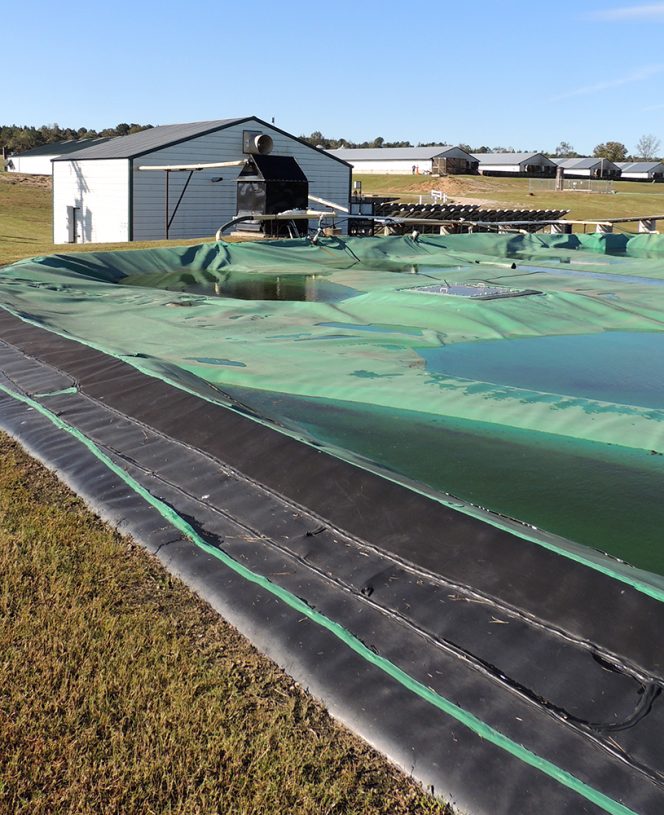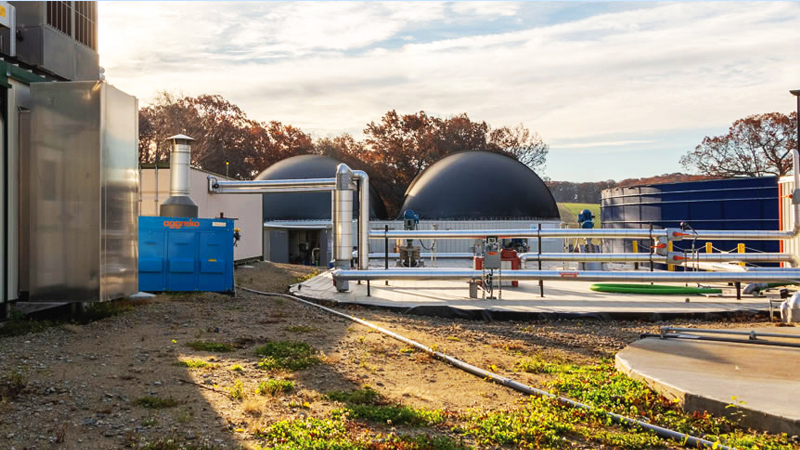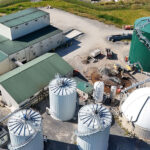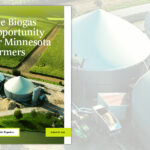Nick Elger and Vanessa McKinney
 For 26 years, the United States Environmental Protection Agency (US EPA) AgSTAR Program has been helping farmers and communities across the United States develop and implement anaerobic digestion (AD) biogas systems. These systems are critical to reduce methane emissions from manure management operations, while also providing other environmental and economic benefits. As a trusted partnership program, AgSTAR helps educate the public on best practices for designing, implementing and maintaining digester projects and brings together leading experts to discuss opportunities and challenges for advancing the biogas industry.
For 26 years, the United States Environmental Protection Agency (US EPA) AgSTAR Program has been helping farmers and communities across the United States develop and implement anaerobic digestion (AD) biogas systems. These systems are critical to reduce methane emissions from manure management operations, while also providing other environmental and economic benefits. As a trusted partnership program, AgSTAR helps educate the public on best practices for designing, implementing and maintaining digester projects and brings together leading experts to discuss opportunities and challenges for advancing the biogas industry.
AgSTAR’s newest resource, the Anaerobic Digester Project Development Handbook, is a comprehensive compilation of the latest knowledge in the industry on best practices for AD/ biogas systems. The goal of the Handbook is to ensure long-term project success for AD biogas systems by providing background and a framework for AD project development.

Butler Farms, Lillington, North Carolina
This 3rd edition of the Handbook covers the basics of AD/biogas systems, including an overview of the biology and chemistry of the system. It addresses key questions to ask when developing and implementing an AD project, including those related to complex business development aspects. While the fundamentals of AD/ biogas systems are carried over from previous editions, the 3rd edition nearly doubles the amount of content and discusses advances in AD that have occurred since 2004. There is new content on renewable natural gas (RNG), nutrient management best practices, and the Low Carbon Fuel Standard (LCFS) — as well as reference to other types of manure management, if AD is not right for the operation.
Although “Project Development” is in the title, this publication is not just for AD project developers. The Handbook has over 100 pages and 11 Chapters of content, with topics relevant to policy makers, financiers, and others interested in implementing AD/ biogas systems.
10 Keys To Digester Success
The 10 Keys for Digester Success is a component of the Handbook that introduces the essentials for successful farm-based digester projects. This updated resource was developed with feedback from experts in AD/ biogas system project development and offers helpful tips to consider for start-up, implementation, operation and continuous improvement.
1. Plan for Success
During the planning stage, identify and define clear project goals. To establish these, site-specific farm information should be collected, including ownership and managerial goals and projections, animal information (e.g., number, types, maturity, bedding type), type(s) of manure recovery, volume of manure, manure analytical information, past and current disposal practices, and operational costs, etc.
2. Recruit and Secure an Experienced Team
Work with an experienced team to initiate and implement the project. This will substantially increase the chance of project success. The complexity of these projects requires specialists.
3. Use a Sustainable Business Model
Not only should the project be cost-effective, it must meet the project’s financial goals including revenue and profit generation and return on investment. The economic factors include well-defined project costs, expenses, revenue or income, and liabilities, among many others. Personal goals for the project’s liquidity and profitability potential define the financial factors. The business model could consider involving partners, utilizing third party investments, or other traditional ‘cooperative’ models.
4. Secure Suitable Feedstock Supply
Identifying suitable feedstocks may include evaluating the chemical, biological, and physical characteristics. The digester must be supplied with a consistent quality and type of feedstock (manure and co-substrates) to maintain a productive microbial community. This will result in consistent organic destruction and biogas production and minimize operational issues. See AgSTAR Codigestion Guidelines for additional information.
5. Identify Appropriate Technology
No single AD technology can be used for all situations or all feedstocks. Rather, the AD technology must be chosen to match the project conditions and feedstock characteristics. There are alternatives such as composting and other aerobic technologies, which are also effective at converting organics.
6. Analyze Options for Biogas and Digestate Use
Consider market availability, capital and operating costs, and potential revenue to determine the most beneficial use for biogas. Determine the ability for digestate on-site use. Consider external markets for products such as bedding, compost, and fertilizer.
7. Develop Off-Take Agreements
Establish off-take agreements for energy and digestate products, including the prices and detailed specifications for all delivered materials.
8. Evaluate Added Benefits
Consider the added benefits of using AD, which may be difficult to quantify. These include climate, soil, water quality, sustainable food supply, community relations, and odor control.
9. Community Outreach
Community outreach and education is critical to obtain buy-in and approval from the community, including, but not limited to, regulatory approval and community and neighborhood approval where the project is located.
10. Plan for Operation and Maintenance
Good operation and maintenance practices are key for effective operation of AD/biogas systems. This includes continuous monitoring and management to ensure the biological processes and mechanical equipment are working properly. It is also important to consider whether current staff or a third party will be used to perform these functions.
A Connected Resource
In addition to details about AD/biogas system best practices, the Project Development Handbook contains links to dozens of additional resources from experienced professionals in the field to ensure that users have access to information beyond what is covered in the Handbook. The EPA AgSTAR Program is eager to keep growing the number of successful AD/ biogas systems in the U.S. Be sure to check out the new Anaerobic Digester Project Development Handbook, as well as the AgSTAR website to learn more.

Nick Elger and Vanessa McKinney
Nick Elger is Program Manager for the EPA AgSTAR Program and serves as the Agriculture Lead with the Global Methane Initiative (GMI). In his role at AgSTAR, Nick works with the U.S. livestock industry, state and federal agencies, and biogas industry stakeholders to advance deployment of digesters and biogas systems. With GMI, he helps advance anaerobic digestion of organic feedstocks globally for methane mitigation and energy production.
Vanessa McKinney is Program Manager for EPA’s AgSTAR Program, where she works with U.S. livestock, biogas and government stakeholders to advance deployment of digesters and biogas systems. She has over a decade of experience in energy efficiency, renewable energy and air emissions regulation and policy.













